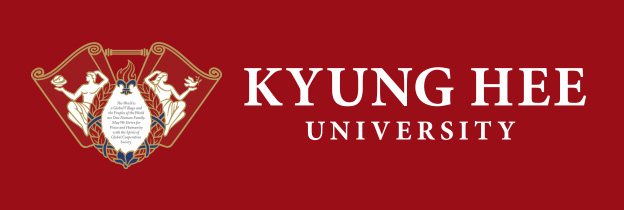News
Korean Painting with AI: Transcending the Boundaries Between Tradition and Technology
2025-04-21 Academic
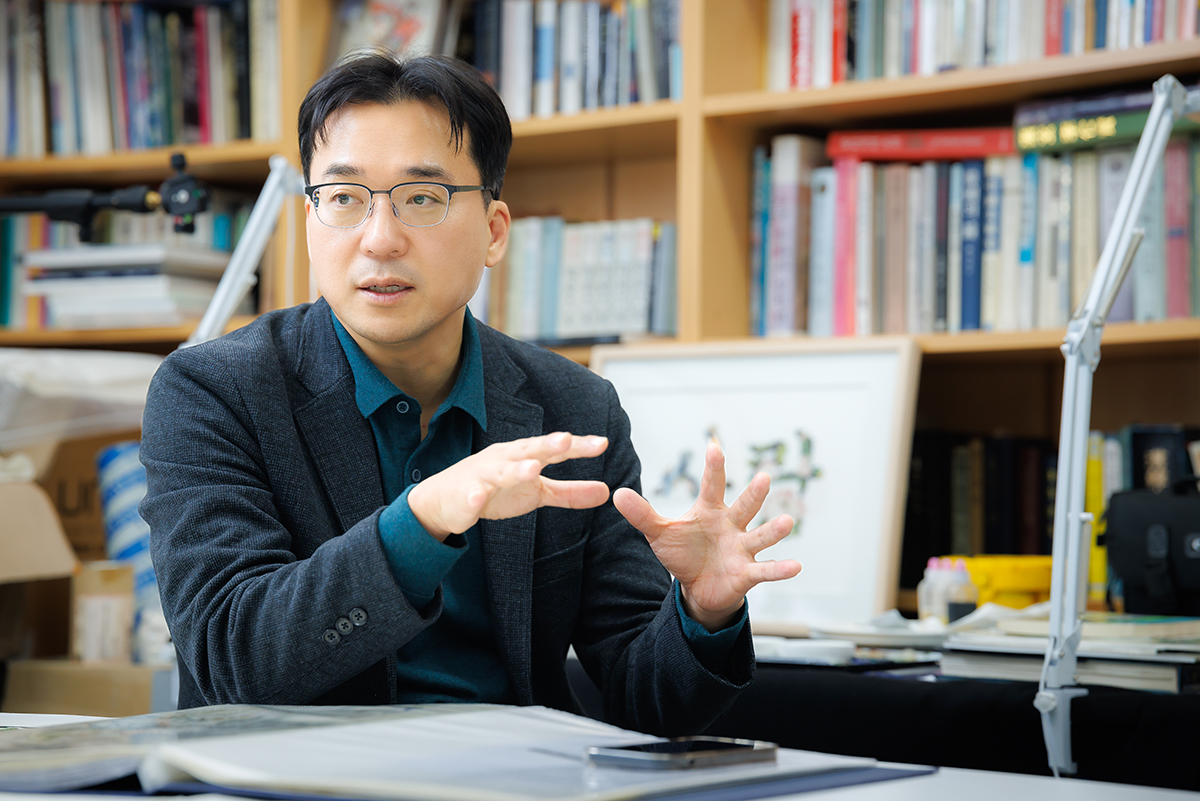
Kyung Hee Fellow (3) Research Category Winner Professor Hyoung-min Na of the College of Fine Arts
Convergence of Fine Art and AI: Building Korean Painting Datasets
Pursuit of Intellectual Inquiry Contributing to Humanity and Society
Every year, the University confers the title of Kyung Hee Fellow (Research and Education) upon faculty members who have demonstrated exceptional accomplishments in the fields of education and research. Professor Hyoung-min Na of the College of Fine Arts has drawn considerable attention for his innovative synthesis of traditional Korean painting technique with artificial intelligence. He was selected as this year’s Kyung Hee Fellow not only for his artistic contribution but also for his success in securing intellectual property rights through the construction of datasets on diverse traditional Korean art (ink painting, colored painting, and folk painting) that led to the development of AI capable of generating paintings in diverse traditional Korean styles. We spoke with Professor Na to learn more on his research achievements and future plans. <Editor’s Note>
Professor Na’s research pioneers a new pathway in artistic creation by merging the distinctive aesthetic sensibilities of traditional Korean paintings with the latest artificial intelligence technologies. Rooted in the tactile practices of brush, ink, and paper (Hanji), Korean painting embodies a visual idiom marked by distinctive aesthetic values and philosophical depths. Yet his research goes beyond simply retracing the inherited style. Using AI to replace the traditional painting tools, Professor Na reimagines the act of painting itself by proposing not only a new artistic medium but also a new method of creation, one that interrogates the evolving role of the artist in the age of AI and the creative potential of AI in fine arts.
One of the biggest challenges in the development of AI lies in the lack of high-quality, style-specific data. Existing datasets in the field are fragmented and insufficient, resulting in outputs that are frequently distorted or conflated with other styles of East Asian artistic stream, particularly those of China and Japan. In response, Professor Na initiated a comprehensive data-building project in 2022, constructing a robust corpus that faithfully and clearly captures the formal and aesthetic qualities distinctive to traditional Korean paintings.
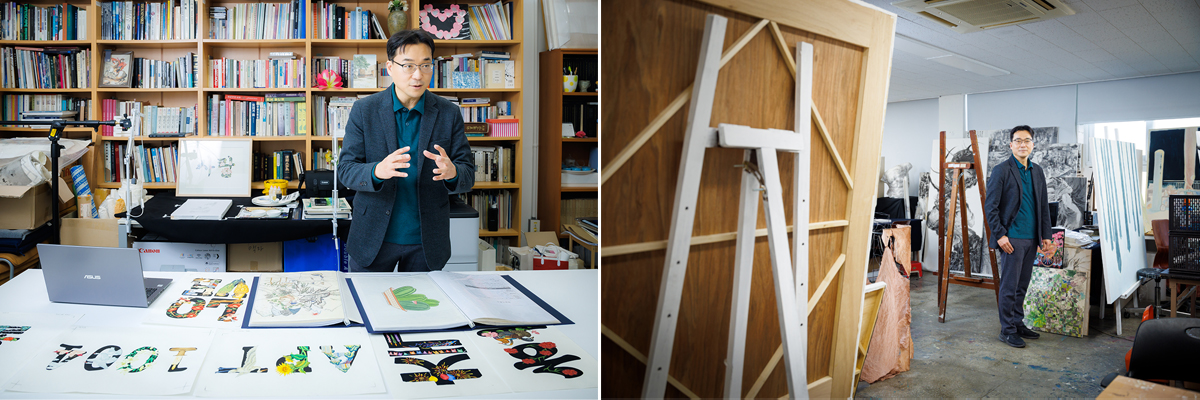
In 2022, Professor Na started the creation of datasets tailored to traditional Korean ink paintings, systematically categorizing them by stylistic typology. This seminal work was expanded in 2023 to encompass traditional Korean watercolor paintings, with both phases involving the digitalization of artworks and the application of detailed labeling processes essential for machine learning. Through these efforts, he has secured approximately 7,300 samples of ink paintings and 4,400 samples of watercolor paintings, respectively, thereby establishing a substantial corpus to support AI training rooted in the visual language of traditional Korean painting.
To address the potential copyright issue, he adopted a proactive strategy of directly producing original folk paintings to secure data. Folk painting, an important genre within the broader boundary of traditional Korean art, embodies distinct aesthetic sensibilities characterized by humor, unencumbered creativity, and popular appeal. Despite its cultural significance, existing datasets lacked copyright-free material suitable for AI training. Professor Na said, “Folk paintings reflect our unique emotions (humor, creativity, and popularity), and they represent a widely appreciated and culturally resonant genre at the time. It is crucial to construct a database free from copyright entanglements in order to develop an AI capable of generating images in the style of folk painting.” As a result of this initiative, a dataset containing approximately 600 discrete elements—including human figures, objects, and plant forms—has been compiled, providing a critical resource for machine learning grounded in the visual idiom of Korean folk art.
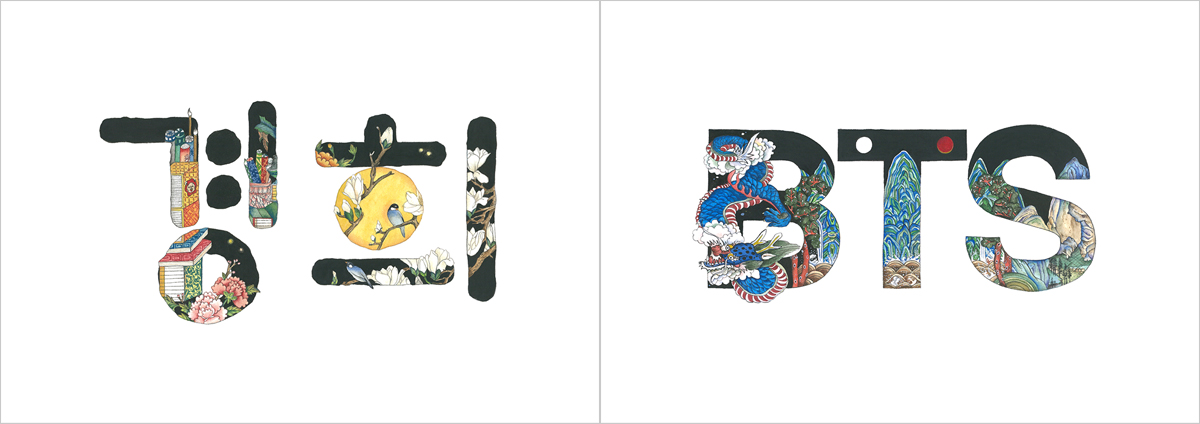
Building upon the dataset of folk painting-style imagery, Professor Na has initiated creative applications that extend traditional Korean aesthetics into new expressive domains. Among these is the development of a Korean character map generation system and a complementary system for the English alphabet, both rendered in the style of folk painting. Patent filings for these innovations are already underway. This work illustrates a strategic approach to cultural revitalization, reimagining traditional forms through the optics of modern sensibility, and underscores the potential for global engagement. Professor Na said, “Just as global phenomena like BTS played a transformative role in disseminating Korean culture worldwide, creative projects rooted in our cultural heritage possess the distinct capacity to shape international trends.” His confidence reflects a broader ambition: to reposition traditional Korean art not merely as a subject of preservation, but as a dynamic resource for contemporary innovation with transnational appeal.
Professor Na emphasized that the core impetus behind his research lies not in its technical novelty or economic applicability, but in its potential to chart new trajectories within the domain of pure artistic inquiry. He expressed his belief that “research should not only pursue business value but also pursue universal values that can ultimately contribute to human society.” His belief resonates with the ideal of Creation of a Civilized World—the foundational philosophy of Kyung Hee—in that research and scholarship should aspire to realize and promote universal values that speak meaningfully to the shared human condition.
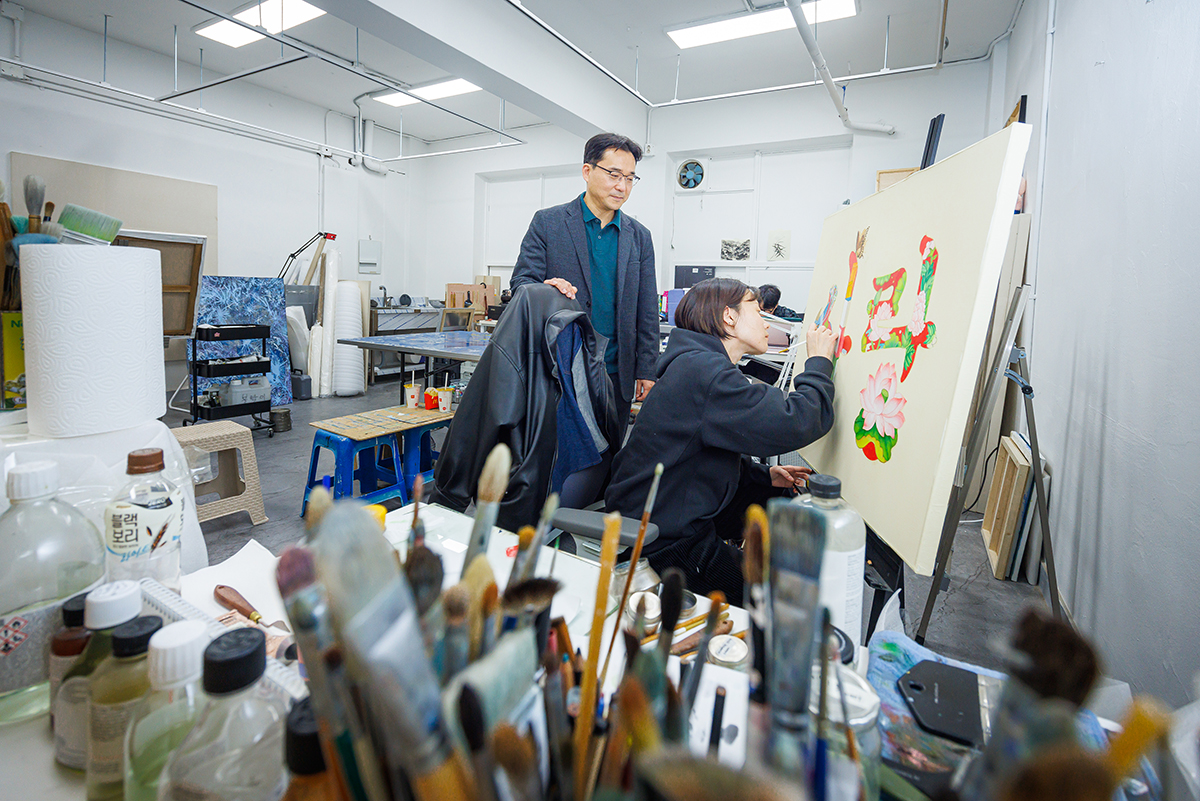
Professor Na also emphasized cooperation and convergence as one of the crucial aspects of research. Research centered on the role of AI in artistic creation must rest upon sustained dialogue between divergent domains of expertise in art and technology. The fusion of art and technology, he observed, cannot proceed without a precise grasp of their respective logics, especially when addressing the question of how AI-generated imagery can be understood, evaluated, and applied from an authentically artistic standpoint. To bridge this epistemic divide, he furnished opportunities for developers and engineers to engage directly with works of art, thereby fostering a reciprocal awareness: the technologists, through exposure, developed an incipient artistic sensibility, while the artists, in turn, came to recognize the significance of the enabling power of AI technology. Looking forward, Professor Na affirmed the plan to continue his research on cultivating harmony and dialogue between art and technology.
-
News List
-
Highlight News
-
Info
- University Communication & Press
- +82-2-961-0106
- khsd3080@khu.ac.kr

